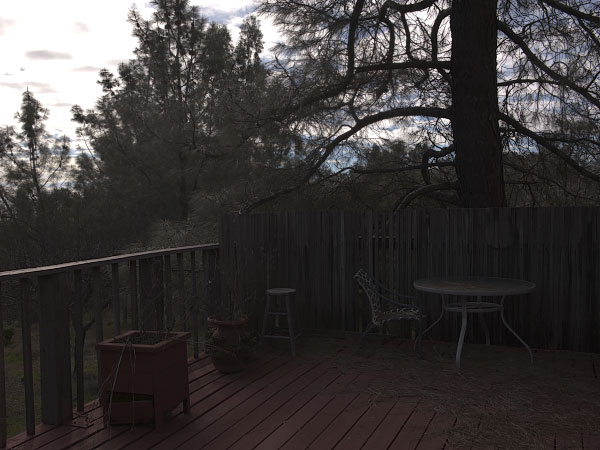
Digital Zone System Example
As an example of using the Zone System with digital capture, I stepped out onto the deck and shot the mundane January scene below, using the Nikon D700 at ISO 200. The backlit hazy clouds were very brilliant, and it would normally be a challenge to record them and the dark tree trunk together in the same image. The Pentax V reading of the highlights in the clouds varied from 18 to almost 19; I used 19 to give some margin for error. The darkest part of the tree trunk read 10; the blue sky read 16. Placing the clouds on zone IX caused the tree trunk to fall on zone O, and the blue sky on zone VII. I exposed the image at 1/250 at f/16. The straight result, processed in Adobe Camera Raw with all controls zeroed, is not much to look at:

The clouds were flashing in the camera’s highlight warning preview, and one might have been tempted to discard the image and try again. But reducing the Exposure to -2 in ACR brought out plenty of detail, so it looks like this image is usable after all:
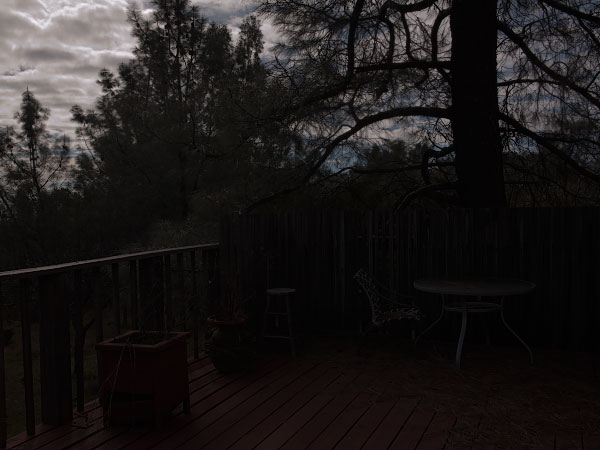
I started by applying a Strong Contrast curve to the straight image, increasing the Brightness to +130, and setting Contrast to +30. This takes care of the foreground:
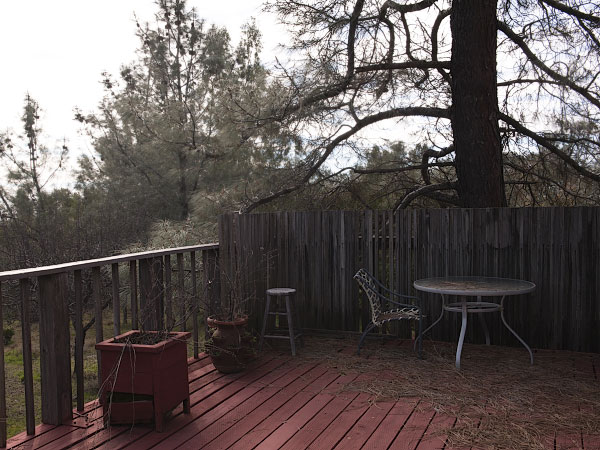
Reducing the Contrast back down to 0 improves shadow detail in the tree. Here it is, full-size (remember, it fell on zone O):
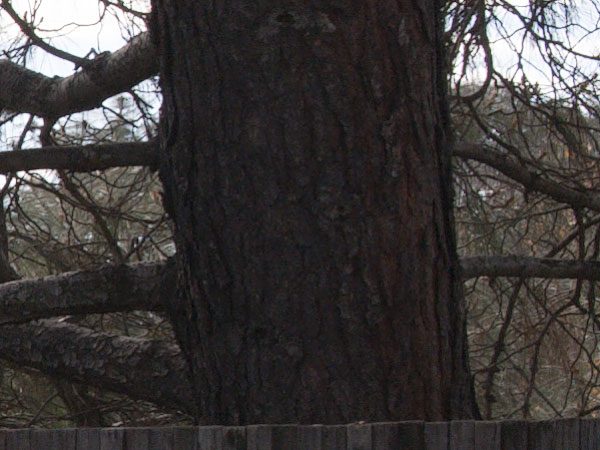
I then used the Threshold tool to make selections of the adjusted sky and tree. Pasting these into the foreground-adjusted image above resulted in a surreal HDR look, so I reduced the opacity of the sky layer, and made some more adjustments:
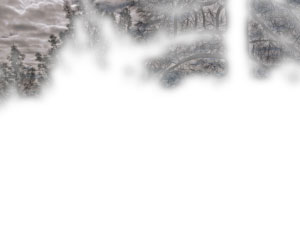 |
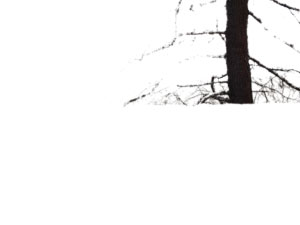 |
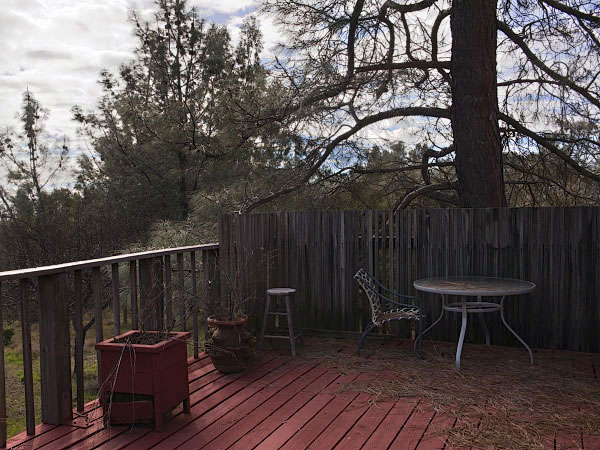
Nothing spectacular, but you can see that all the visualized values are present in the final image.
Roll the mouse over the image to toggle it back and forth between the original and final versions.
(In reality, better results could have been obtained by combining several exposures, placing the sky lower and the tree and foreground higher; I’m just illustrating how much dynamic range can be extracted from a single exposure.)
Next: more examples